When I presented wood ageing techniquesI also mentioned distressed, one of the most widely used methods of antique furniture finishing. Distressed is the term adopted from the English, but in factories it is commonly said consumption or burning of the mucous membranes. The method is mainly used for furniture, on a simple, flat piece of wood the effect is greatly diminished. It consists of sanding the edges or other parts of the furniture down to the bottom layer or wood, the aim being to make the furniture look well used.
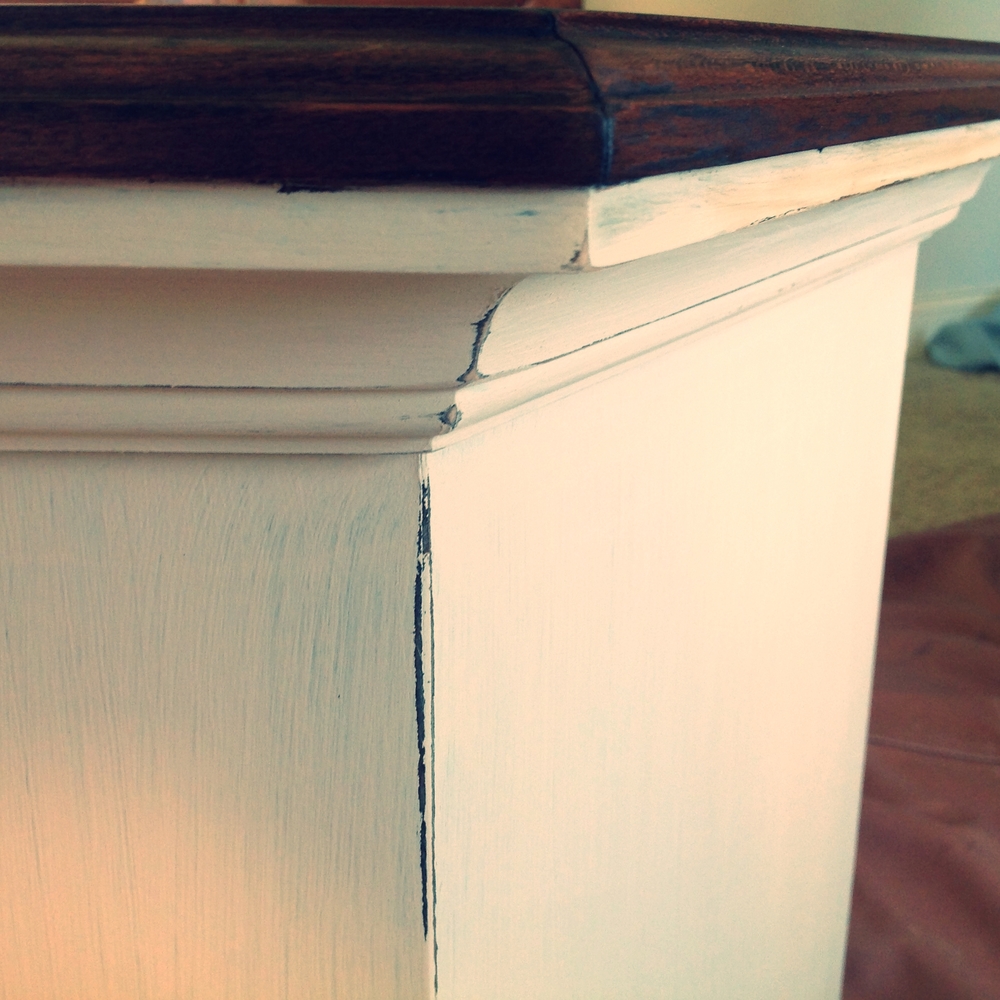
Achieving distressed finish by sanding
One of the ways to achieve the effect is to sand the finish layer down to the wood. This suggests that the furniture is so old that it has been tocit in certain places. In this case you sand the edges, corners and places where the wear is supposed to be greater, until you get to the wood. To make the effect as visible as possible, the wood must be painted, totally covered. On a clear finish the effect is only visible if the stain used to stain the wood is a dark color.
You can see how to sand the edges in the material below:
Application of successive coats of paint
Another way to achieve the effect is by applying several successive coats of paint before sanding. After they are completely dry, sand the edges, but also the sides of doors, drawers and the sides of furniture until a different color undercoat is achieved. Sanding is also carried out in places where it is presumed that the paint has faded through long use: wooden handles and around them, the edges of doors or drawers, the corners and edges of furniture.
For the effect to be visible, there must be a noticeable difference between the two layers of color. The effect can be achieved by superimposing a coat of one color of paint and a coat of another color of paint, or two coats of paint of different colors. The difference between the two is the thickness of the film. If you want the thinnest possible film, we recommend the paint and the paint. To be economical, the whitewash can be applied only to the places where sanding is to achieve the effect - edges, borders, handles. To prevent the stain from migrating into the paint, protect it with a thin coat of colorless primer. The paint is then applied in a thin layer so that it is not difficult to remove. Finally, protect the effect with a coat of clear varnish.
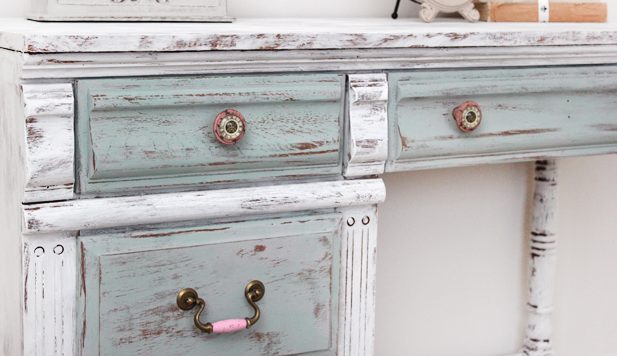
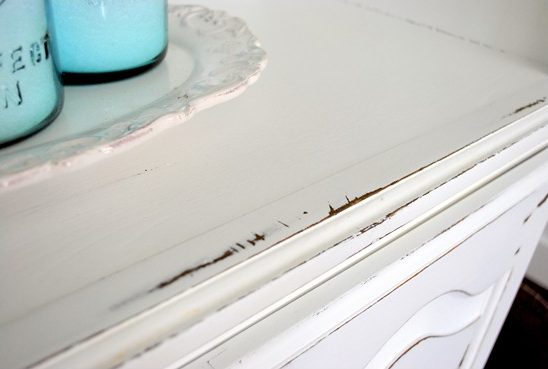
Recommendations on wearing off the paint
Sand with sandpaper or abrasive sponges. Steel wool is not recommended because it is too fine to remove the paint layer. The grit used is the usual one for sanding between layers (240-320). If the thick layer of paint makes it necessary to use smaller grain sizes, such as for sanding wood whiteIt is recommended that you then smooth everything with finer sandpaper so that the surface does not remain rough.
Another method can be used for more advanced surface damage. The paint layer can be attacked with a 1:1 mixture of water and concentrated vinegar. The paints that can be used with this method and that are resistant to the mixture are those with a high calcium carbonate filler (chalk) or water-thinnable acrylic paints (decorative wall paints). Pour the mixture over the furniture, then wipe with a soft cotton cloth. Do not insist, the paint is easily absorbed. Once dry, apply a coat of wax or clear varnish.
Sometimes, for a more aged look, a topcoat can be applied before the topcoat. antiquing patina or use a dark brown colored wax as a top coat.
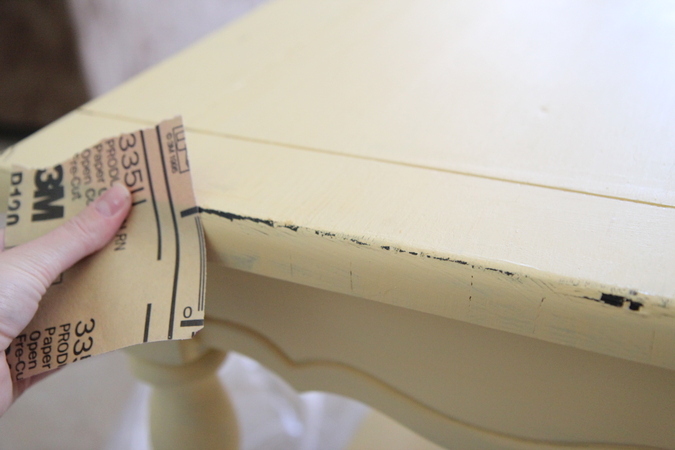
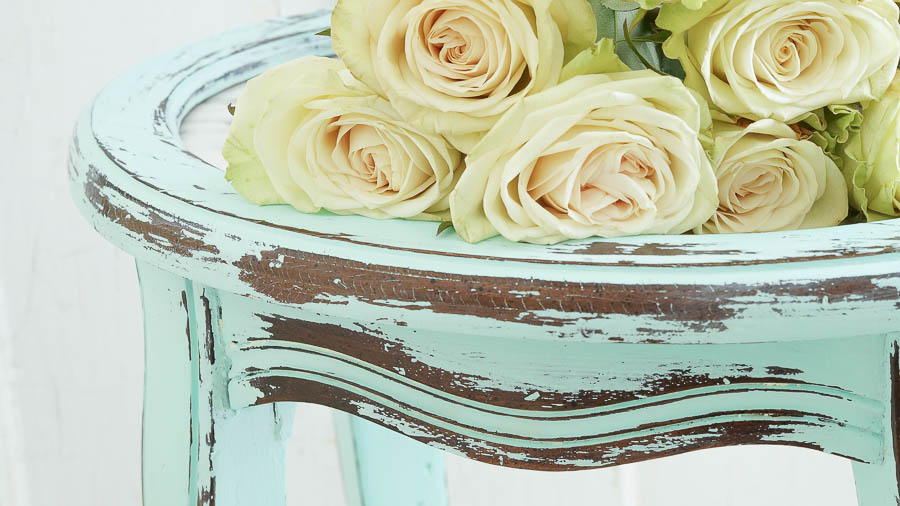
Distressed is a widely used way to age wood. It is not difficult to achieve but, as with any distressed finish, it is very important that the result is believable, natural. This means that as well as technique, the process requires a certain flair, a special talent for this kind of work.
I hope you find the above information useful. As always, additions are welcome. And if you have any questions or queries, please leave them below in the space provided. I will be sure to reply

































Hello! can I use decorative wall paint on wood and get this effect? Interesting, I had not thought of such a thing... and for protection I can give with wax or matt varnish, colorless?
You can also use decorative wall paints. Check beforehand the compatibility with wax or varnish.
You really gave me an idea... I have a table that I want to change the color of, it's too dark, to paint it with the same paint I just painted the walls of the room with. It's a decorative paint that's quite muddy, more muddy than a normal washable paint... and on top of that I want to try a cracking effect...
If you give a thicker amount it may crack when drying. But check that it does not lose adhesion to the substrate. Good luck!
Excuse me, I'm driving you crazy with the questions... but before I should put a primer, otherwise it's possible that the glass will peel in time...
Thank you and have a wonderful day!
If the furniture is old, already finished, it should not be primed. It should be cleaned (washed) with water and detergent, dried well and sanded so that the paint adheres. The primer is recommended to be applied directly to the wood. It is basically the bond between wood and varnish.
Thank you very much for all the guidance!
Have a nice day!